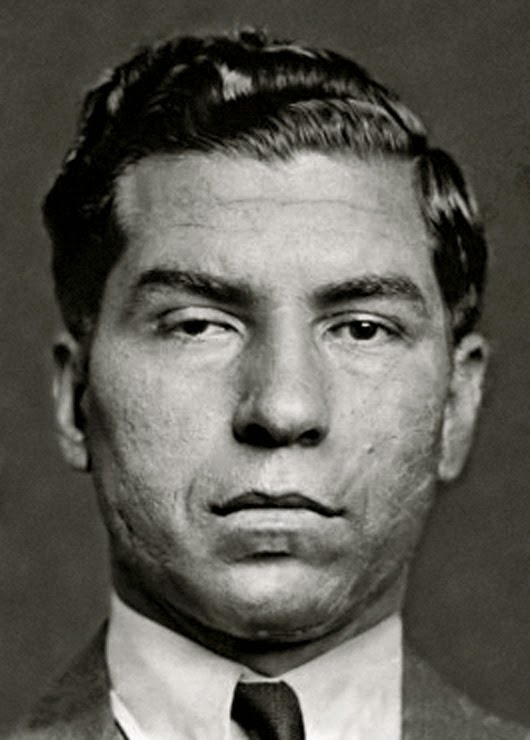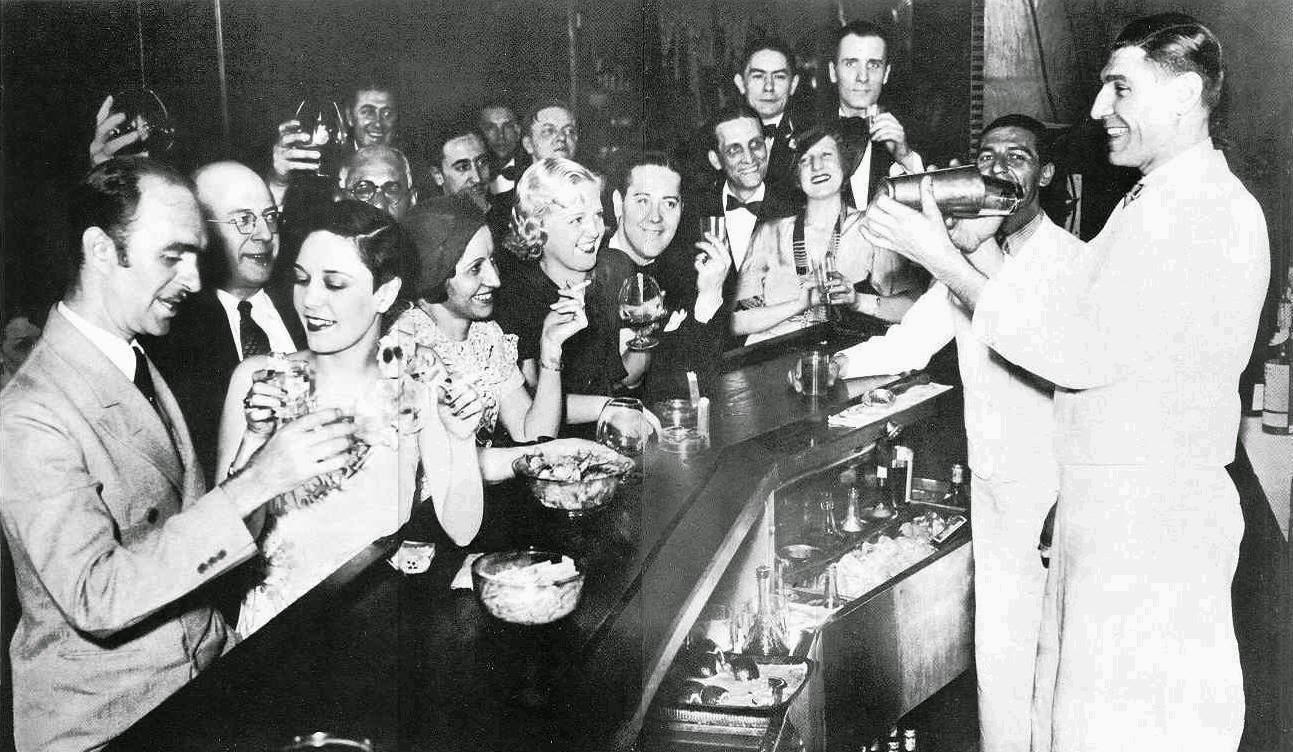Prohibition's influence today
The high taxes on alcohol, attitudes towards drink, and the strange, Byzantine laws result from the period. Prohibition explains American drinkers' habits, from under-21 students partying in foreign cities to a preference for Scotch - it also explains why on earth Americans drink Canadian whisky. The popularity of light, low-alcohol beers comes from the moralistic attitude that led to Prohibition, while making wine at home led a generation and more to prefer sweeter wine. Because of Prohibition, states have different laws on alcohol, which is why it's impossible to get alcohol on a Sunday in Indiana but possible to get some over the border in Ohio. These laws also make shipping alcoholic beverages from one state to another bureaucratically tortuous. If it weren't for Prohibition, Bourbon could well be the world's leading whiskey and California the world's leading producer of wine.reasons for Prohibition
The period from 1919, when the Eighteenth Amendment was passed, until its repeal in 1933 seems now a crazy time in American history, when an everyday activity was outlawed, the law routinely broken, and organised, violent crime became ordinary. Prohibition resulted, however, from many factors which still resonate today. Prohibition happened not just because of anti-alcohol sentiment - which was arguably still in a minority when Prohibition came into effect - but due to a wide-ranging and still on-going debate about what it meant to be American. |
| Anti-Saloon League slogan: perhaps not the deterrent intended |
temperance movement
Dominated in large part by Anglo-Saxon Protestants, Methodists, and Baptists, the temperance movement was a reaction to the chronic alcoholism it saw afflicting the US. Similiar movements existed in Canada and northern European countries, where forms of Prohibition were introduced in Germany, Sweden, Norway, Iceland, and Finland. The UK also had its own movement, with Temperance Bars scattered around the country and a restriction on pub opening times enacted during the First World War, restrictions only fully lifted in 2003.
 suffragism
suffragism
Those initially most concerned with the nation's drinking
problem were women, who saw the damage their fathers' and
husbands' alcoholism could have on the family income and well-being. The
Women's Christian Temperance Union (WCTU) was founded in 1874 by
Frances Willard and 34 other women, and was an instrumental organisation
in the campaign for limits on the sale of alcohol. This campaign became
directly linked to the right for women to vote, in the tactical belief
that any form of Prohibition would only be enacted if women were able to
vote on the issue. The Eighteenth Amendment of 1919 brought in Prohibition, the Nineteenth of 1920 gave women the vote. income tax
The tax returns on alcohol were so high that proponents of Prohibition had to come up with an alternative revenue should alcohol be banned. The answer was federal income tax. Unlike the Eighteenth Amendment, the Sixteenth Amendment of 1913 introducing income tax has never been repealed. Ironically, the federal government later used Prohibition gangsters' unpaid income tax bills to imprison them.the role of the government
Income tax was seen by its opponents as a trangression on an individual's rights: no government should have the right to impose a levy on an individual's wealth. The relationship between the federal government and the individual was, and still is, one that goes to the core of how America perceives itself. Not only did the imposition of Prohibition and income tax demonstrate a central government willing to intervene in the lives of its citizens, so did the methods, such as wiretapping and stop and search, used to combat criminality during Prohibition.drinking
30% of federal revenue came from taxes on alcohol in 1910, much of it from beer. This was the period when national breweries began to dominate the industry, including Anheuser-Busch, still a giant conglomerate responsible for Budweiser. Most of the major breweries were German, and their customers German and Irish. The associated rise of the male-only, heavy-drinking saloon gave rise to the name of the most powerful Prohibition lobby, the Anti-Saloon League.immigration
 |
| Anti-Saloon League poster |
race
The Ku Klux Klan, refounded in 1915, initially vented their racist rhetoric against Catholics and Jews, but others were happy to push their views on race on to arguments in favour of Prohibition. A Nashville newspaper stated that, "The Negro, fairly docile and industrious, becomes, when filled with liquor, turbulent and dangerous." The black population did not have the vote at the time, but any political power they might gain was of concern. Frances Willard of the WCTU feared that, "the grogshop is the Negro's center of power." It wasn't just the Drys who used such objectionable language: a St. Louis distiller marketed a so-called "nigger gin" with the name, "Black Cock Vigor Gin."organised crime
 |
| Lucky Luciano |
bootlegging
Although there were enough stills producing high-strength alcohol of dubious quality around the US, plenty of alcohol was smuggled into the country. Neighbouring Canada, despite having watered-down Prohibition laws of its own, benefited greatly - legal whisky exports to the US rose from 8,335 gallons a year before Prohibtion to 1.1m by its end. Compensating for a decline in British whisky consumption, the Scottish whisky industry used its Canadian connections to establish a strong presence in the US, although the Caribbean was another starting point for smuggling - the 914 gallons of Scotch sent to the Bahamas in 1918 had already risen to 386,000 in 1922. The Bahaman tourist industry dates from Prohibition, due to the number of American tourists travelling there in search of a drink (also the origin of the cruise ship holiday).the drinks industry
Only a handful of brewers made it through Prohibition - those large enough to maintain alternative production of ice-cream and, more relevantly, malt syrup for home brewers. At Repeal, they were ideally positioned to gain control of the new, legal demand for low-alcohol beer. These brewers were Anheuser-Busch, Pabst, Miller, and Coors, who still dominate American beer today.The wine industry at first benefited from Prohibition. The necessary fashion for home-winemaking meant that the demand for grapes rose hugely, and the price of grapes in Napa and Sonoma hit record highs. The number of people drinking wine doubled in the first years of Prohibition, most of it made at home. As a result, quality was hit: plantings of Alicante Bouschet, which produces simple, boldly-coloured wine, overtook quality grapes and winemaking knowledge was lost, to the point that Californian wine did not regain its standards until the 1960s.
The taste for spirits had been in decline for some time before Prohibition. Even before national Prohibition, Jack Daniel's had been forced to move from its home in Tennessee to St. Louis. It moved back in 1938, where it is still based in a 'dry county.'
drinkers' habits
Women entered Prohibition supporting it and left it opposing it. Prohibition made drinking an equal pastime, allowing men and women of different backgrounds to socialise together openly. Social, cultural, and racial divisions had been broken down - thanks to Prohibition, everyone was a drinker. |
| celebrating the end of Prohibition |
consequences
Drinking actually went down after Prohibition, although this was due in part to the poverty of the 1930s and the war of the 1940s. But making drinking legal meant that the government could directly benefit from drinkers' habits, rather than try and punish them. Prohibition led to widespread social drinking, the popularity of cocktails, and a tendency towards sweetness in alcoholic drinks, but it's the broader social and political effects that perhaps have had more consequences: for instance, the increased role of federal government. Arguments over that role and attitudes towards immigrants continue today. Despite the failure of Prohibition, which led to hardened drinking and increased crime, various governments around the world still believe it to be the correct policy to adapt towards drugs.further reading: "Last Call: The Rise and Fall of Prohibition" by Daniel Okrent (2010)


No comments:
Post a Comment